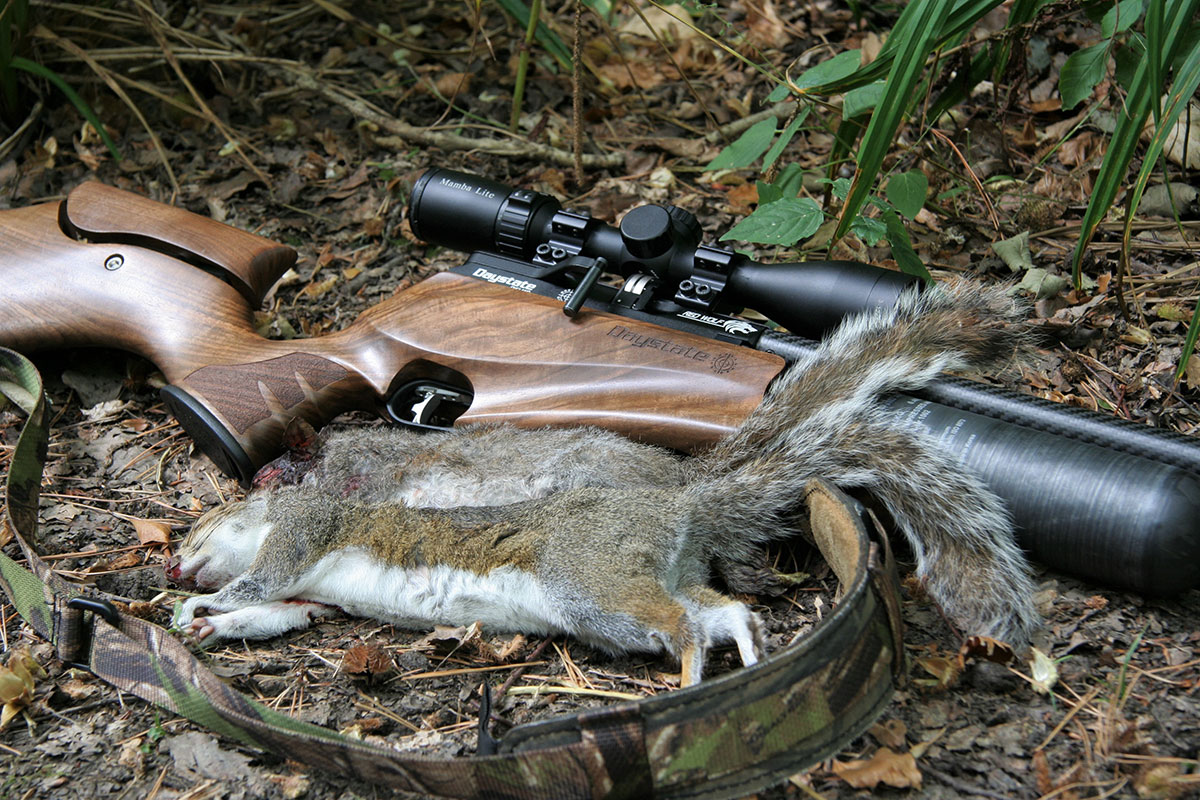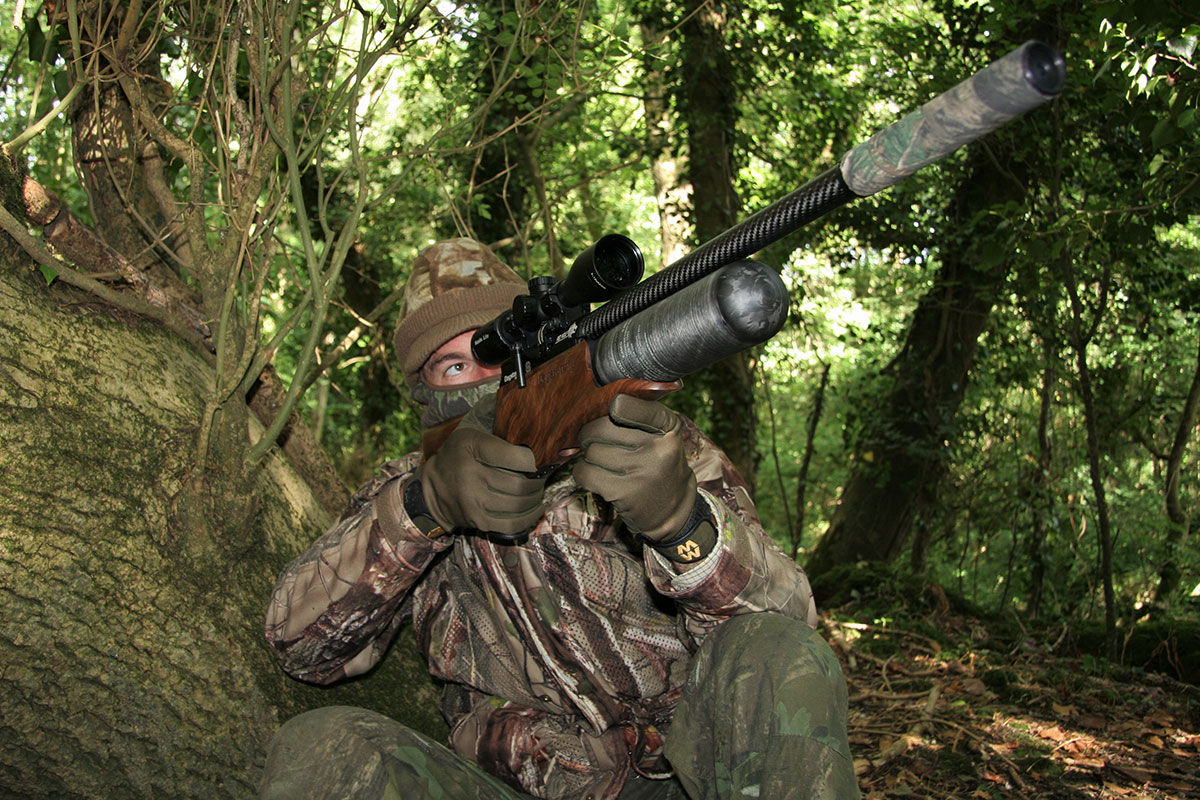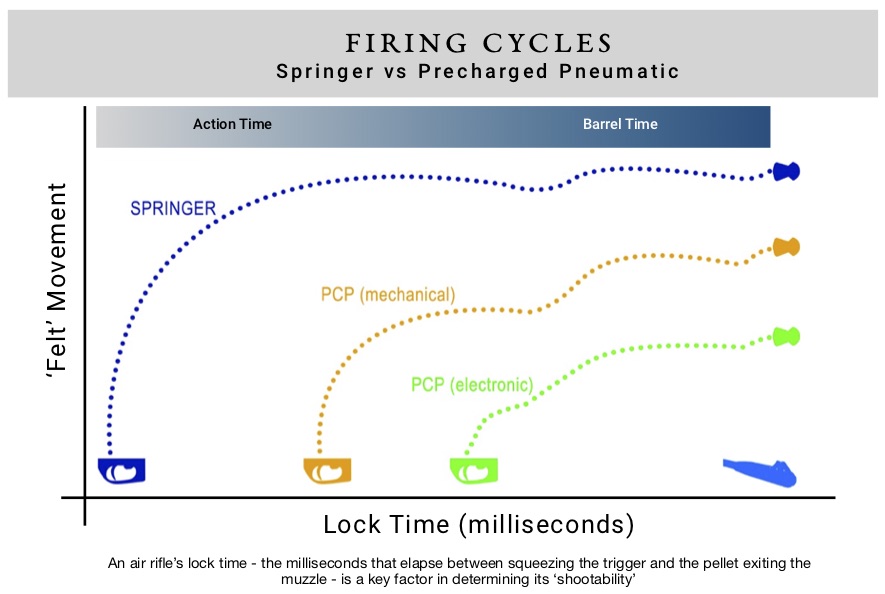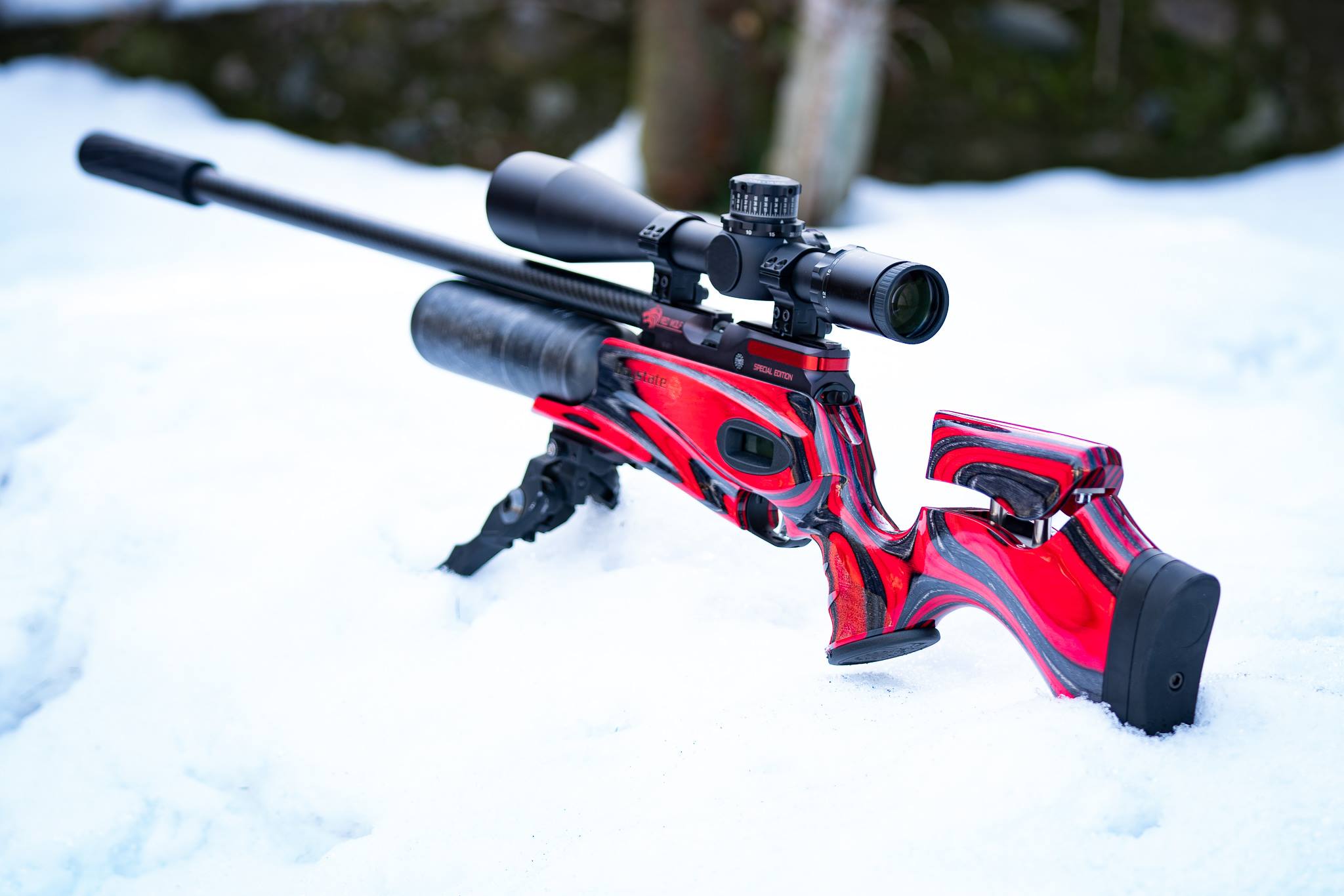Destructive grey squirrels are never far away from an easy food source. Mat Manning recounts a morning targets greys feeding on beech mast – their meal of choice during late summer…
Most people are aware of the serious damage caused by invasive grey squirrels across the UK. This introduced rodent has contributed to the decline of our endangered red squirrel. It also has a destructive habit of stripping bark from young trees. This can kill trees, and at the very least leaves them stunted and deformed – for this reason, the grey squirrel costs our national forestry industry millions of pounds every year.
Grey squirrels are successful because they are versatile opportunists. Their diet ranges from seeds and buds to eggs and chicks raided from songbirds’ nests, and everything else in-between. Airgun shooters who target whatever seasonal food source the greys are plundering shouldn’t take long to track down your quarry.
I often use feeding stations to assist with my squirrel culling duties. By offering a regular supply of something they love to eat – usually peanuts, maize or wheat – you can quickly create an area of attraction. The great advantage of this approach is that it maximises your chances by establishing a place where you are more or less guaranteed to encounter your quarry.
Although feeding stations can be very effective, few things beat the experience of roving around your shoot in search of hunting opportunities. It may not be the most productive method but it’s a great way to keep tabs on your shoot. And there’s no denying that it’s even more satisfying outwitting squirrels during a roving session than smacking them off a peanut feeder from the cover of a hide.
I’ve just returned from a stroll through one of my woodland permissions where I had a hunch that the squirrels would be feeding on ripening beech mast – a late-summer favourite. My hunch proved right and, while I only ended up with a modest bag, any reduction in squirrel numbers is a good result.
After parking just off a woodland ride, I loaded up the magazine of my Daystate Red Wolf and kicked off with a mobile approach. Making my way through the woods towards a large stand of beech trees, I moved slowly and paused from time to time to scan ahead. It’s surprising how much more you notice when you stand still, and I usually stop every ten metres or so when making my way through the trees in this way.
My initial few reconnaissance stops yielded very little, other than glimpses of songbirds flitting around in the treetops. I carried on deeper into the woods and eventually spotted something more promising.

Scanning the treetops is an obvious thing to do when you’re after grey squirrels but it’s also vital to keep an eye on the ground. These rodents spend a lot of time foraging amongst the leaf litter, especially when their mates, along with jays, woodpigeons, and nuthatches, are showering a constant hail of beech mast onto the ground as they pick seeds from the branches.
And it was the scattering of fallen beech mast that was occupying the first squirrel I spotted during my outing. Its flicking tail caught my eye as I scanned the ground ahead but, unfortunately, the squirrel had already clocked me. It froze for a moment before scrambling up a trunk and into the trees where it disappeared from sight.
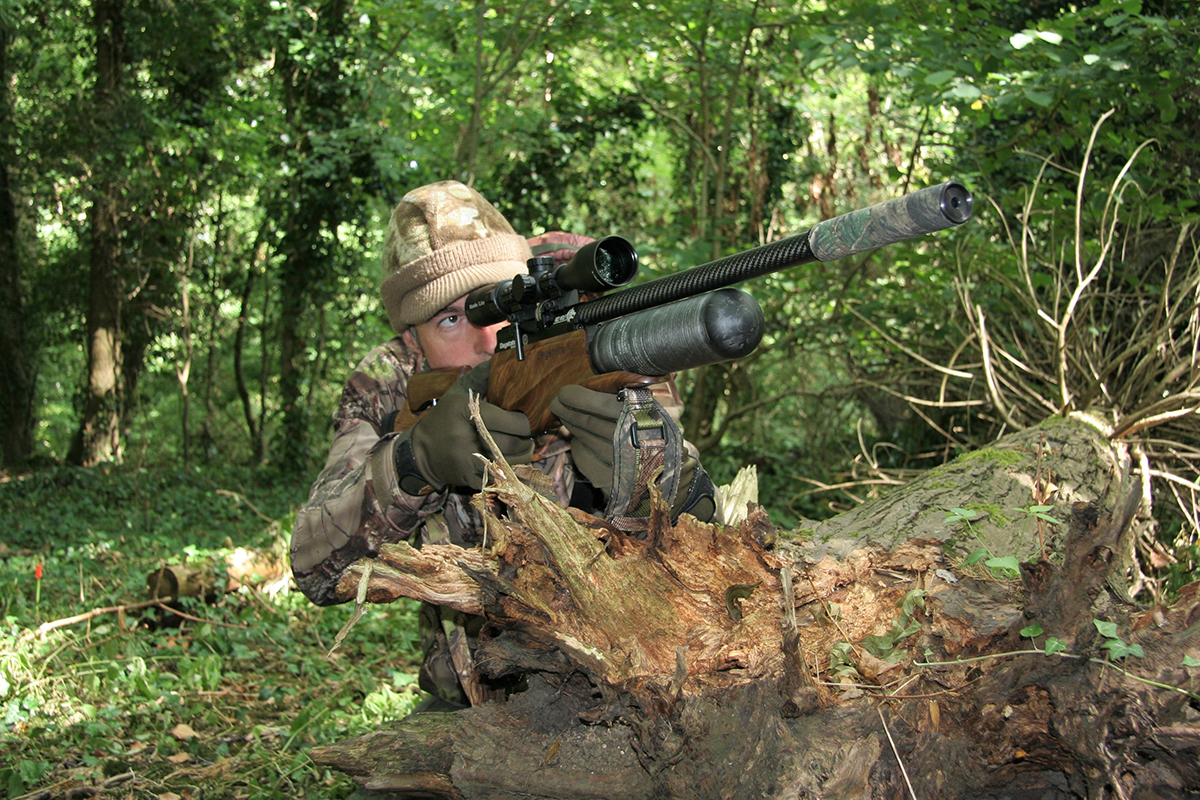
I continued to close in, very slowly and very quietly, until I spotted the squirrel pinned to the trunk about 20 feet off the ground. After creeping a couple metres closer I settled myself behind the stump of a fallen tree, which made for a handy shooting rest. The fine crosshair of my MTC Mamba Lite scope came to rest on the squirrel’s skull and I touched off the trigger. The .22 calibre 35ft/lb Red Wolf hits like a hammer, and a ringing crack echoed around the woods as the pellet found its mark. A thud followed as the lifeless squirrel flopped down onto the sun-baked woodland floor, confirming the first kill of the session.
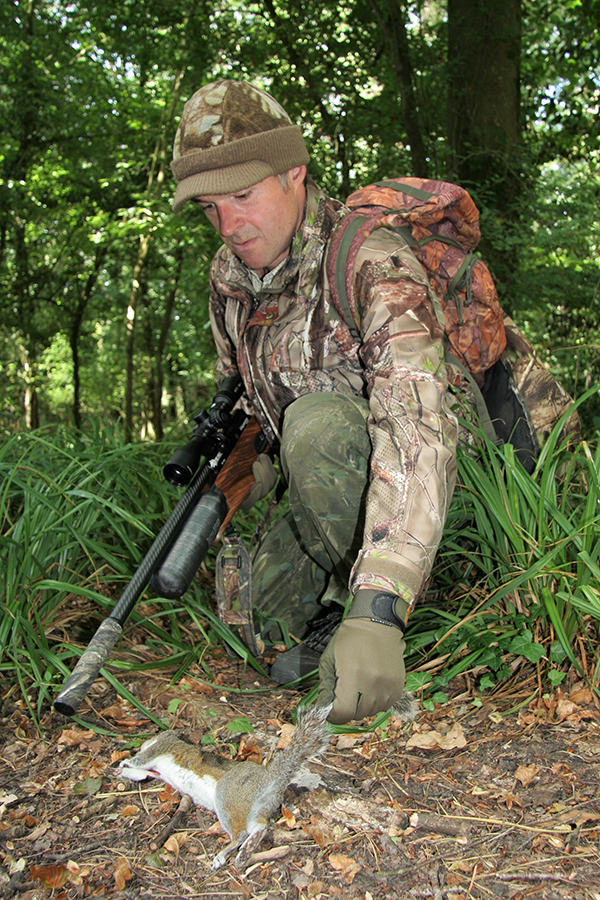
A scattering of mast covered the ground beneath the extensive stand of mature beech trees. I had no doubt that there were more squirrels to be had from this bountiful spot so I decided to wait in the shade where the broad trunk of a leaning ash created a natural backdrop to work with my camouflage clothing.
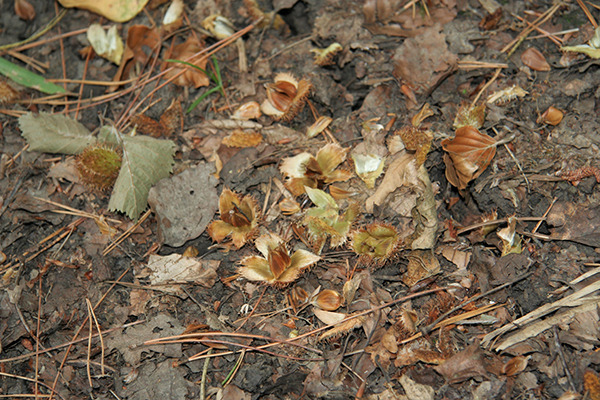
Less than 20 minutes after I’d settled in, I noticed the tell-tale sound of beech husks rattling down through the branches. This shower of shells is caused by feeding squirrels casting off their leftovers after extracting the nutritious kernels. Trace the sound to where the husks are landing and follow the tumbling kernels up through the treetops and it should lead you to the seed-nibbling culprit.
Sure enough, I eventually managed to track down the squirrel at the source of the falling shells. Distracted by the urge to fill its belly, it was oblivious to the hunter lurking in the undergrowth. Once again, I shouldered the Red Wolf and drew a bead on the unsuspecting squirrel’s head before squeezing off the shot to push my tally up to two.
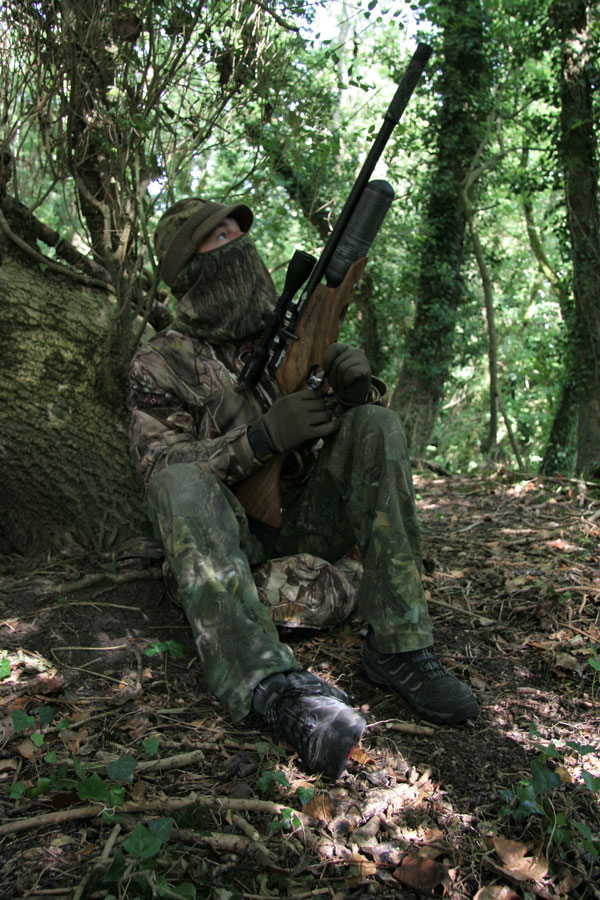
Less than 20 minutes after I’d settled in, I noticed the tell-tale sound of beech husks rattling down through the branches. This shower of shells is caused by feeding squirrels casting off their leftovers after extracting the nutritious kernels. Trace the sound to where the husks are landing and follow the tumbling kernels up through the treetops and it should lead you to the seed-nibbling culprit.
Sure enough, I eventually managed to track down the squirrel at the source of the falling shells. Distracted by the urge to fill its belly, it was oblivious to the hunter lurking in the undergrowth. Once again, I shouldered the Red Wolf and drew a bead on the unsuspecting squirrel’s head before squeezing off the shot to push my tally up to two.
I sat it out for another hour but failed to spot any more squirrels before I decided it was time to head home for breakfast. It was far from my biggest bag of greys, but I was delighted to have bagged a couple by targeting their late-summer feeding grounds. Get out and give it a try, and if the beech mast on your local permission has gone over by the time you read this, you can probably count on finding squirrels feeding on acorns or sweet chestnuts.
